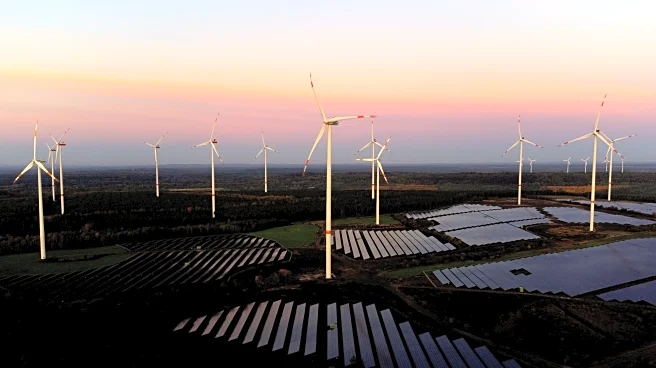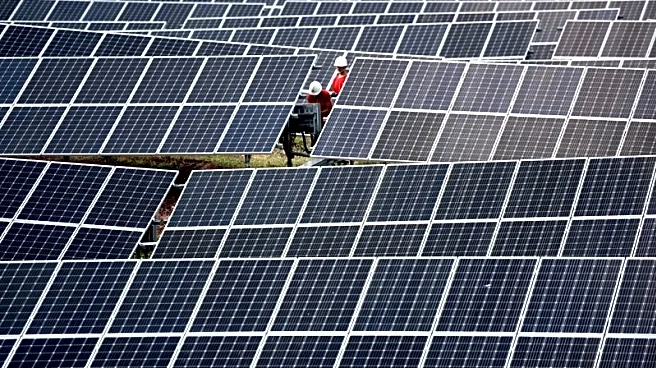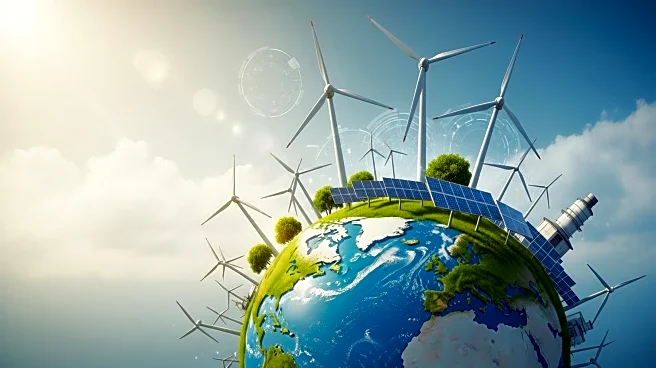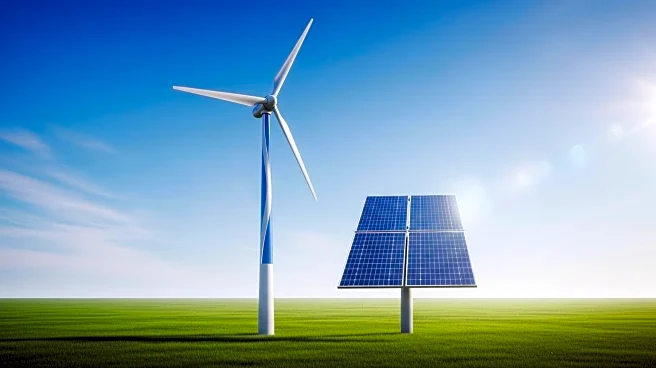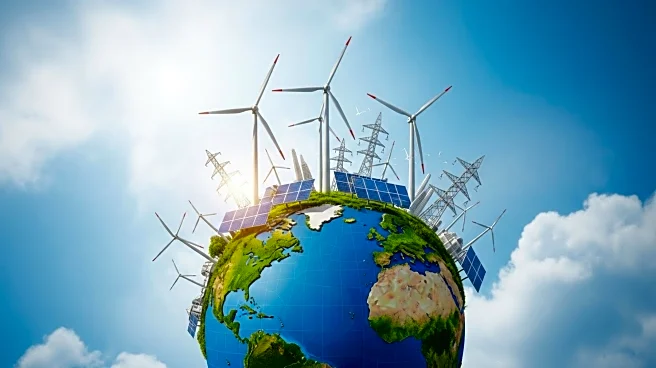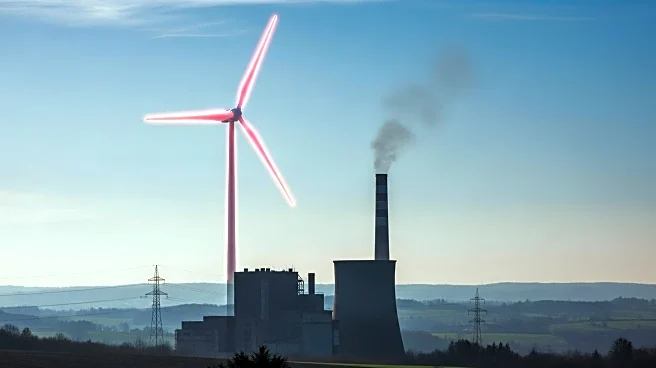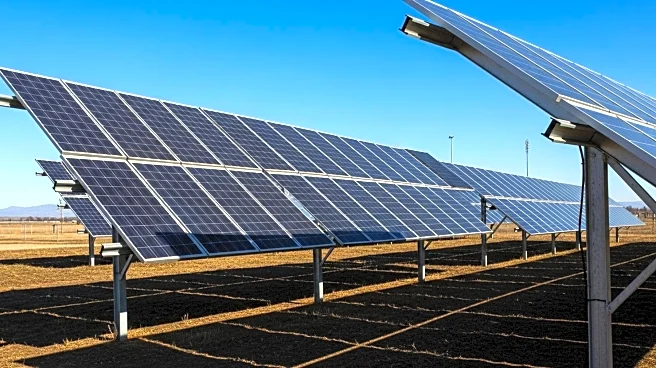What's Happening?
Renewable energy has surpassed coal as the world's largest source of electricity in the first half of 2025, according to data from Ember. This marks a historic shift, with solar and wind energy meeting 100% of the global increase in electricity demand. Despite this global progress, the U.S. and EU have increased reliance on fossil fuels due to higher electricity demand and weaker renewable output. The International Energy Agency has adjusted its forecast for U.S. renewable growth, citing policy impacts under President Trump's administration.
Why It's Important?
The global transition to renewable energy is essential for reducing carbon emissions and addressing climate change. The U.S.'s increased reliance on fossil fuels highlights the need for policy changes to support renewable energy growth. The disparity between developing and developed nations in energy transition efforts underscores the importance of international cooperation and policy alignment to achieve global climate goals. The shift also impacts economic strategies, as countries like China lead in clean energy technology exports.
What's Next?
The International Energy Agency predicts slower renewable growth in the U.S. due to current policies, suggesting a need for strategic adjustments. As China continues to dominate clean energy growth, the U.S. may need to reconsider its energy policies to remain competitive in the global market. The ongoing development of renewable technologies and infrastructure will play a crucial role in shaping future energy policies and market dynamics.
Beyond the Headlines
The shift towards renewable energy has broader implications for global energy markets and geopolitical dynamics. China's dominance in clean tech industries may influence global trade and economic relations, while the U.S. faces challenges in balancing domestic energy policies with international climate commitments. The rapid growth of solar energy in developing countries presents opportunities and challenges, including infrastructure development and energy access.



